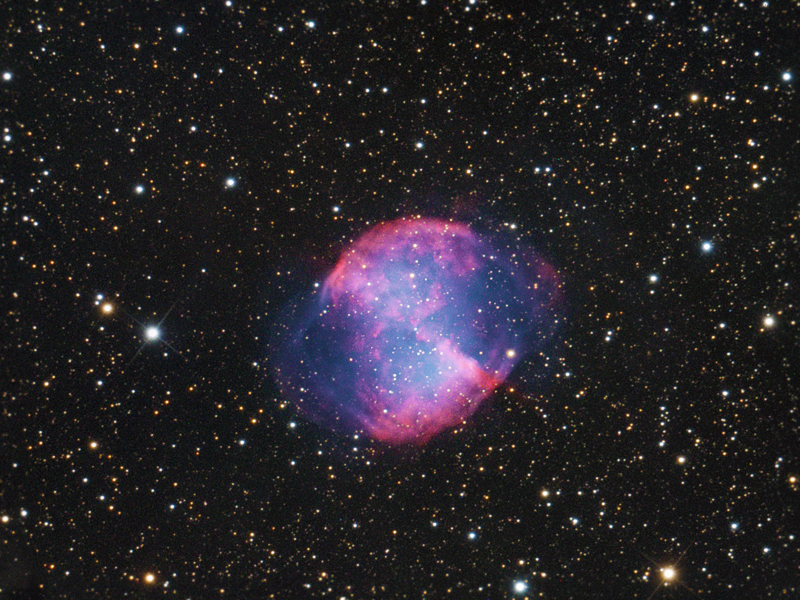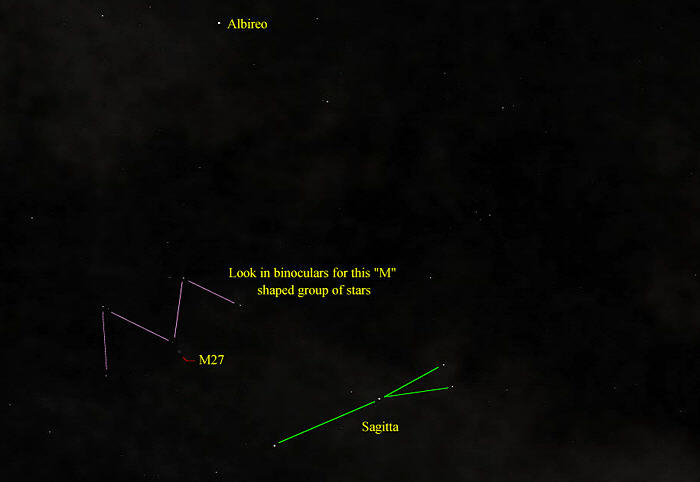To find Messier 27: Look between Albireo and Sagitta for a group of stars in the shape of an "M". These stars can be seen faintly with the naked eye on a clear night, but are easy in binoculars. The small constellation of Sagitta is found in the south corner of the "summer triangle" formed by the bright stars, Deneb, Vega and Altair. Refer to the sky charts in the June Natural Calendar to locate it in the night sky. Use the stars of Sagitta to gage the field of view of your binoculars. M-27 is just below the middle of the "M". Looking to one side of M27's position (using averted vision) will make it easier to spot. It is an interesting object in telescopes of all sizes, though visually you will see only a faint greenish color to the nebula. The human eye is most sensitive to this wavelength of light. As with all deep sky objects, the less light-pollution you have at your observing location, the better. The parts of the nebula that appear red in the above image are much brighter visually than the parts that appear blue-green. Because of the shape of these brighter parts of the nebula it was nicknamed, "The Dumbell Nebula" by John Herschel. In larger telescopes you can also see the fainter extensions, and the nebula appears to be football shaped. Clicking on the binocular finder chart below will take you to a printable black-stars-on-white-background version that will be easier to use outside.
|
||||||||||||||||||

